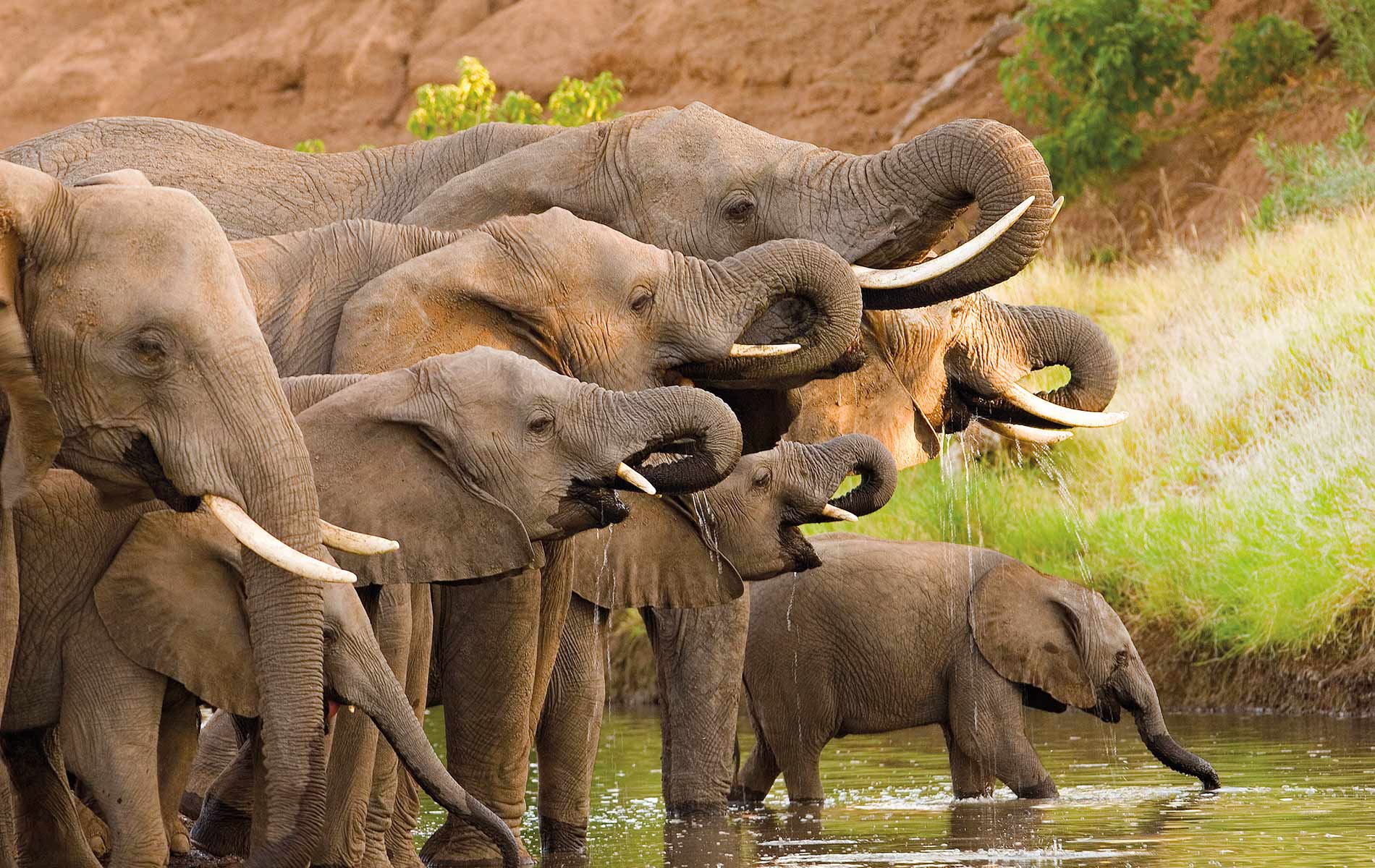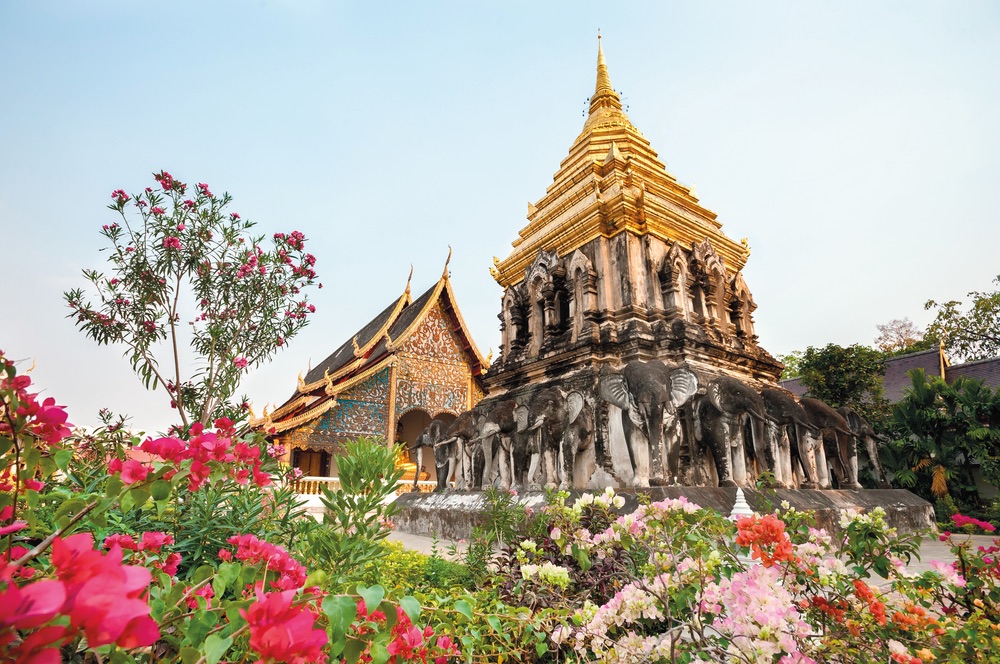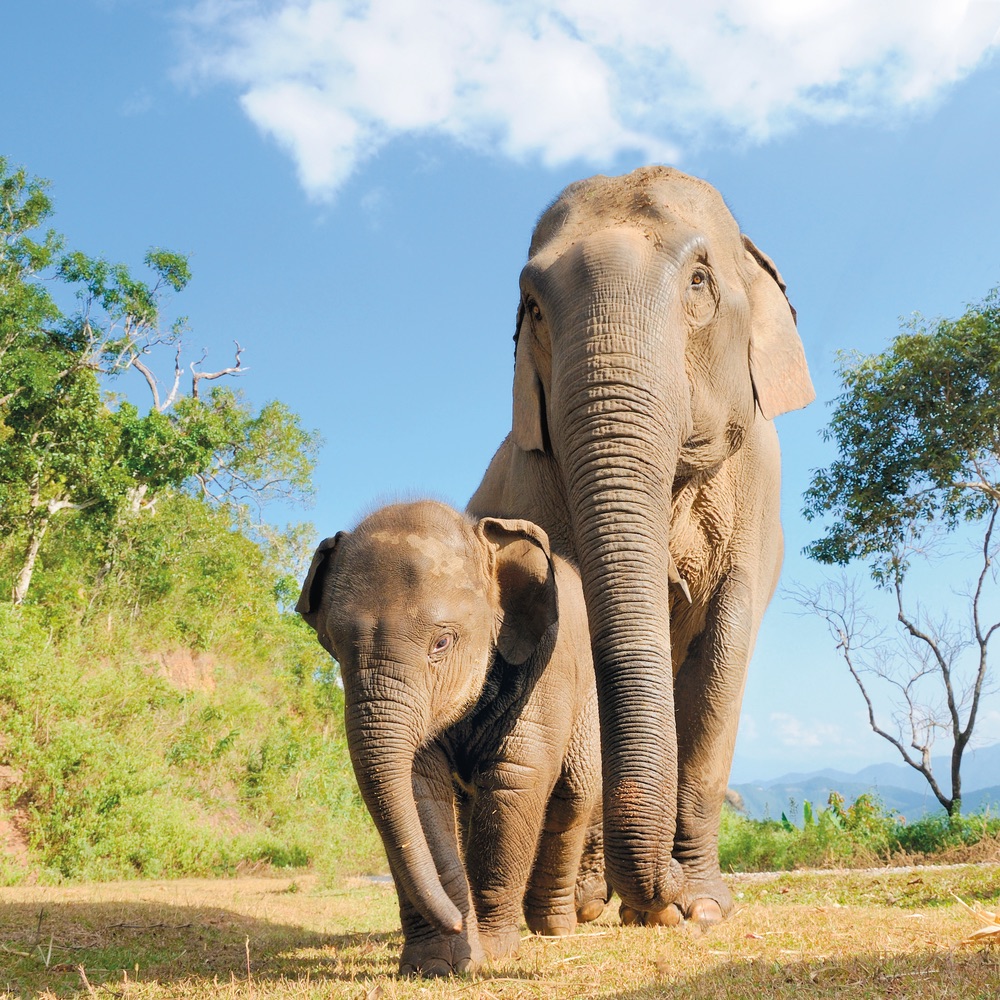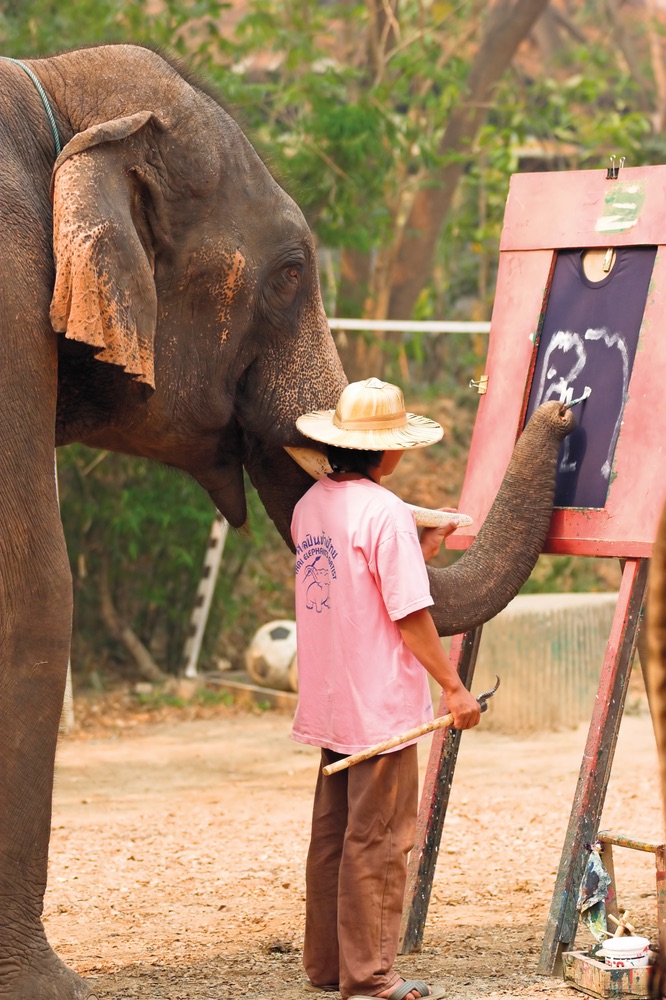
vie-magazine-cambodia-elephants-hero
Pachyderm Picassos in Thailand
By Janice Lutz Weisman
Last year, accompanied by my daughter, son-in-law, and three young grandchildren—Brian (11), Chris (9), and Allie (5)—I spent the month of August in the magical and mystical countries of Cambodia and Thailand. We visited the UNESCO World Heritage site of Angkor Wat and other temples and palaces built by the Khmer people between the ninth and twelfth centuries. We relaxed in a world-class resort on the island of Phuket, shopped until we dropped, sailed the Andaman Sea, and reveled in the region’s unique cultures. Most of all, we appreciated the kind and gracious people who live in these lands.
Since our time was limited, we flew between our five destinations. Air fares were low and flying was preferable to long drives on less than ideal roads.
Our fourth destination was Chiang Mai in the northern mountainous region of Thailand, close to the border with Myanmar and 426 miles from Bangkok. On our first day, accompanied by a guide, we drove in an air-conditioned van to the Maesa Elephant Camp, built in 1976 as a conservation center for domesticated elephants from all over Thailand. Most of these elephants had found themselves out of work following a national ban on using elephants for logging. Heavy machinery had replaced them, but it was not possible to return them to the wild, and their futures looked bleak. They and their trainers (mahouts) took to the streets to beg for food. In response, people in northern Thailand developed elephant sanctuaries like Maesa. Small fees charged to visiting tourists help to support the camps.
The elephant is the national symbol of Thailand. A white elephant represents royalty. In ancient times, elephants were used as war combatants and also in construction. (Over six thousand elephants were used during the building of the Angkor Wat temple.) In 1900, Thailand had a hundred thousand elephants. Today, they number between three and four thousand, with approximately half of them living in the wild. Their numbers continue to decline due to many factors, including the destruction of their habitats, global warming, and poaching for ivory, leather, and meat.
What a sight to see! There were over seventy magnificent elephants at Maesa, and they looked healthy and well cared for.
Each elephant in the camp has a personal mahout who devotes his life to the animal, which he receives as a young boy. The mahout trains, rides, and tends to the elephant; they bond for life. Usually, the mahout takes the elephant home to his or her local village at night. The Maesa camp was set in tropical lands with waterfalls and a river running through it. As we arrived at the camp, we were greeted by some of the elephants lined up behind a rustic fence. What a sight to see! There were over seventy magnificent elephants at Maesa, and they looked healthy and well cared for. We fed them with sugar cane and bananas, which we purchased from local villagers. The elephants wrapped us with their trunks for hugs and gave us powerful suction kisses on our cheeks. We watched them walk down to the river where they bathed and frolicked in the water. There were even baby elephants to see in the Maesa Nursery. The camp has a full-time veterinarian who looks after these highly intelligent animals that can live in captivity for seventy to eighty years.
After the baths, some of the elephants marched to an outdoor arena, where they proceeded to play games like soccer and demonstrate their many skills. Finally, six of the elephants gathered around the arena with large easels set up in front of them. Their mahouts carried brushes and buckets of paint and placed a paint-loaded brush in each elephant’s trunk, and the animals started to paint. The elephants are unable to pick up the brushes for themselves, so the mahouts replenished the brushes with paint as needed.
The elephant-painted pictures began to come into focus as bright bouquets of flowers and scenes of mountains and grasses. Each elephant painted something different. We were amazed to see the elephants’ degree of precision and muscle control that could produce straight lines for depicting things like tree trunks and branches. Did they recognize the subjects of their paintings? The answer is probably not. Are the elephants artistic? What is “art” anyway? One definition of art is the production of what is beautiful, appealing, or of more than ordinary significance. The fact that the elephants have been trained to do particular pieces of work does not detract from their intelligence, memory, skills, or painting prowess. The Maesa camp sells the paintings, and a percentage of the profits go toward elephant preservation. Before we left, I purchased a landscape painting with a green, yellow, and brown tree in the foreground. In the right corner is an orange splash of a sun. Whenever I look at my work of art, it reminds me of the unforgettable experience I had with these marvelous creatures. Seeing these gentle giants was a trip highlight for all of us.
Whenever I look at my work of art, it reminds me of the unforgettable experience I had with these marvelous creatures. Seeing these gentle giants was a trip highlight for all of us.
In an ideal world, these elephants would live free and without human intervention. I am sure that the elephants would be happier if there were enough safe habitats to meet their needs; sadly, this is not the case. At least these elephants are being cared for and not in danger of being poached. Every March 13, Thailand celebrates National Elephant Day. At the Maesa Camp, they hold a Buddhist blessing ceremony, followed by a buffet of grasses, fruits, and sugar cane set up on long tables. These events raise public awareness of the need to protect and conserve these national symbols.
— V —
MaesaElephantCamp.com
Share This Story!
KEEP UP WITH THE LATEST STORIES FROM VIE




















































































































































